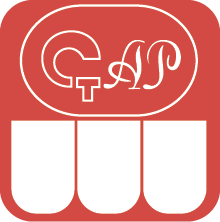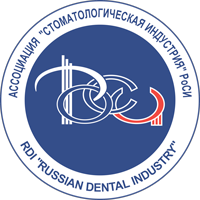DOI:
10.37988/1811-153X_2023_4_92Micro-gap at the conical connection with original or non-original abutment: A comparison of finite element modeling results
Downloads
Abstract
Micro-gap between the placed implant and the abutment plays an important clinical part in the bone loss. Depending on the micro-gap width, its localization and stability under oblique load, we can predict the prognosis of the implant survival under conditions of constant microbial contamination. However, a non-original abutment with relevant quality certificates is also presented at the dental market in addition to the original one. The prospect of its using requires in-depth study. The aim of this study is to compare the micro-gap values at the conical connection of implants from different systems with the original and non-original abutment under oblique load.Materials and methods.
Implants and standard abutments of three implant systems were selected for the study: Straumann BL (Switzerland), BioHorizons Tapered Internal (USA), Nobel Biocare CC (Switzerland), as well as non-original abutments of the ADM Dental system (Russia). During the experiment, an oblique loading of 150, 300 and 450 N was applied by the finite element method, and the micro-gap width and the horizontal abutment deflection from the initial axis were measured. The DTW (Dynamic Time Warping) package of the Python programming language was used to analyze the degree of difference between original and non-original abutments.
Results.
The highest values of the horizontal abutment deflection were observed with Nobel system samples; BioHorizons abutments have the smallest average deflection under the load of 150 N; the Straumann abutments showed the least deflection under the load of 300 and 450 N. The highest values of residual abutment deflection were observed for the Nobel system, the smallest values were for BioHorizons. The highest values of the micro-gap under oblique loading were found for BioHorizons, the smallest ones were for Straumann. The maximum residual micro-gap after unloading was observed for Nobel system, Straumann showed zero residual micro-gap values. Only for Straumann (in 100% of cases), the connection of the implant with the original abutment showed smaller micro-gap and horizontal deflection values compared to the non-original abutment. In other cases, there was a tendency for smaller values when using non-original abutments.
Conclusion.
The study found that using of original or non-original abutments correlates with the width of the micro-gap at the conical connection, and the data obtained indicate the possibility of using non-original abutments in clinical practice. At the same time, it is not the choice of the original or non-original abutment that has a greater influence on the values obtained, but the features of the most loaded implant system.
Key words:
micro-gap, conical connection, non-original abutment, original abutment, finite element analysis, oblique loadingFor Citation
[1]
Kirsanova V.V., Furtsev T.V., Lukin R.S. Micro-gap at the conical connection with original or non-original abutment: A comparison of finite element modeling results. Clinical Dentistry (Russia). 2024; 26 (4): 92—100. DOI: 10.37988/1811-153X_2023_4_92
References
- Schwarz F., Derks J., Monje A., Wang H.L. Peri-implantitis. J Periodontol. 2018; 89 Suppl 1: S267-S290. PMID: 29926957
- Sasada Y., Cochran D.L. Implant-abutment connections: A review of biologic consequences and peri-implantitis implications. Int J Oral Maxillofac Implants. 2017; 32 (6): 1296—1307. PMID: 29140374
- Peñarrocha-Diago M.A., Flichy-Fernández A.J., Alonso-González R., Peñarrocha-Oltra D., Balaguer-Martínez J., Peñarrocha-Diago M. Influence of implant neck design and implant-abutment connection type on peri-implant health. Radiological study. Clin Oral Implants Res. 2013; 24 (11): 1192—200. PMID: 22925048
- Assenza B., Tripodi D., Scarano A., Perrotti V., Piattelli A., Iezzi G., D‘Ercole S. Bacterial leakage in implants with different implant-abutment connections: an in vitro study. J Periodontol. 2012; 83 (4): 491—7. PMID: 21780904
- do Nascimento C., Miani P.K., Pedrazzi V., Gonçalves R.B., Ribeiro R.F., Faria A.C., Macedo A.P., de Albuquerque R.F. Jr Leakage of saliva through the implant-abutment interface: in vitro evaluation of three different implant connections under unloaded and loaded conditions. Int J Oral Maxillofac Implants. 2012; 27 (3): 551—60. PMID: 22616048
- Tripodi D., Vantaggiato G., Scarano A., Perrotti V., Piattelli A., Iezzi G., D'Ercole S. An in vitro investigation concerning the bacterial leakage at implants with internal hexagon and Morse taper implant-abutment connections. Implant Dent. 2012; 21 (4): 335—9. PMID: 22814560
- Yakovlev A.T., Badrak E.Y., Mihalchenko D.V., Grishina M.A., Demyanova O.B. A study of microflora at dental implant-abutment interface. Volgograd Scientific and Medical Journal. 2015; 1 (45): 46—49 (In Russian). eLIBRARY ID: 23715307
- Schmitt C.M., Nogueira-Filho G., Tenenbaum H.C., Lai J.Y., Brito C., Döring H., Nonhoff J. Performance of conical abutment (Morse Taper) connection implants: a systematic review. J Biomed Mater Res A. 2014; 102 (2): 552—74. PMID: 23533139
- Caricasulo R., Malchiodi L., Ghensi P., Fantozzi G., Cucchi A. The influence of implant-abutment connection to peri-implant bone loss: A systematic review and meta-analysis. Clin Implant Dent Relat Res. 2018; 20 (4): 653—664. PMID: 29761902
- Yamanishi Y., Yamaguchi S., Imazato S., Nakano T., Yatani H. Influences of implant neck design and implant-abutment joint type on peri-implant bone stress and abutment micromovement: three-dimensional finite element analysis. Dent Mater. 2012; 28 (11): 1126—33. PMID: 22920538
- Quaresma S.E., Cury P.R., Sendyk W.R., Sendyk C. A finite element analysis of two different dental implants: stress distribution in the prosthesis, abutment, implant, and supporting bone. J Oral Implantol. 2008; 34 (1): 1—6. PMID: 18390236
- Muraev A.A., Ivanov S.Yu., Leonov S.V., Mrue A.H., Muhametshin R.F., Gazhva Yu.V. Comparative analysis of different types of implant-abutment interface on the basis of three-dimensional finite element analysis data. Stomatology. 2019; 1: 11—16 (In Russian). eLIBRARY ID: 37062619
- Muraev A.A., Ivanov S.Iu., Leonov S.V., Starostin P.V., Chugunov N.M. Stress final element analysis at the abatement-implant-bone interface. Stomatology. 2016; 1: 18—20 (In Russian). eLIBRARY ID: 25675488
- Geramy A., Retrouvey J.M., Sobuti F., Salehi H. Anterior Teeth Splinting After Orthodontic Treatment: 3D Analysis Using Finite Element Method. J Dent (Tehran). 2012; 9 (2): 90—8. PMID: 23066473
- Grandin H.M., Berner S., Dard M. A Review of Titanium Zirconium (TiZr) Alloys for Use in Endosseous Dental Implants. Materials (Basel). 2012; 5 (8): 1348—1360. DOI: 10.3390/ma5081348
- Sharma A., Waddell J.N., Li K.C., A Sharma L., Prior D.J., Duncan W.J. Is titanium-zirconium alloy a better alternative to pure titanium for oral implant? Composition, mechanical properties, and microstructure analysis. Saudi Dent J. 2021; 33 (7): 546—553. PMID: 34803299
- Wu T., Liao W., Dai N., Tang C. Design of a custom angled abutment for dental implants using computer-aided design and nonlinear finite element analysis. J Biomech. 2010; 43 (10): 1941—6. PMID: 20382389
- York R. Characterization of micro-machining of dental screws and abutments: master‘s thesis. Ottawa: University of Ottawa, 2017. 92 p. DOI: 10.20381/ruor-20349
- Nikitin S.G., Pervov Yu.Yu. The effect of physical and chemical factors, arising in the elements of implantation systems, on the central screws of the heads at rehabilitation of patients in the clinic of orthopedic dentistry. Russian Bulletin of Dental Implantology. 2019; 3-4 (45-46): 66—74 (In Russian). eLIBRARY ID: 44038837
- Gil F.J., Herrero-Climent M., Lázaro P., Rios J.V. Implant-abutment connections: influence of the design on the microgap and their fatigue and fracture behavior of dental implants. J Mater Sci Mater Med. 2014; 25 (7): 1825—30. PMID: 24719176
- Al-Gunaid T.H. Bite force What we should know: A literature review. International Journal of Orthodontic Rehabilitation. 2019; 10 (4): 168. DOI: 10.4103/ijor.ijor_33_19
- Regalo S.C., Santos C.M., Vitti M., Regalo C.A., de Vasconcelos P.B., Mestriner W. jr, Semprini M., Dias F.J., Hallak J.E., Siéssere S. Evaluation of molar and incisor bite force in indigenous compared with white population in Brazil. Arch Oral Biol. 2008; 53 (3): 282—6. PMID: 18031710
- Corrêa C.B., Margonar R., Noritomi P.Y., Vaz L.G. Mechanical behavior of dental implants in different positions in the rehabilitation of the anterior maxilla. J Prosthet Dent. 2014; 111 (4): 301—9. PMID: 24355510
- Jorge J.R., Barao V.A., Delben J.A., Assuncao W.G. The role of implant/abutment system on torque maintenance of retention screws and vertical misfit of implant-supported crowns before and after mechanical cycling. Int J Oral Maxillofac Implants. 2013; 28 (2): 415—22. PMID: 23527343
- Koutouzis T. Implant-abutment connection as contributing factor to peri-implant diseases. Periodontol 2000. 2019; 81 (1): 152—166. PMID: 31407436
Downloads
Received
August 2, 2023
Accepted
October 16, 2023
Published on
January 16, 2024









